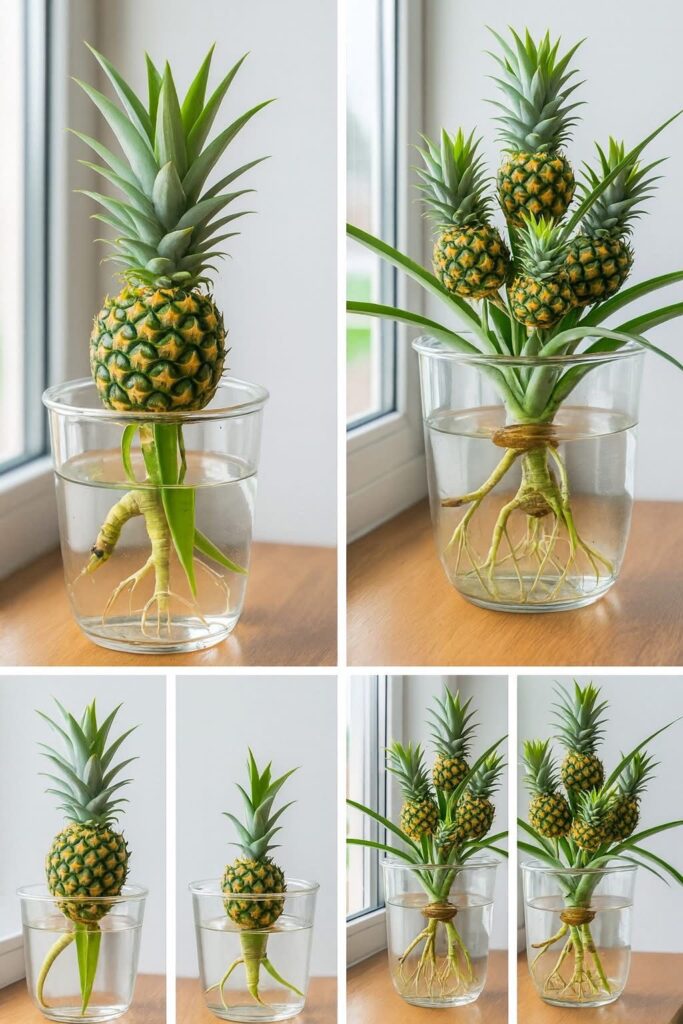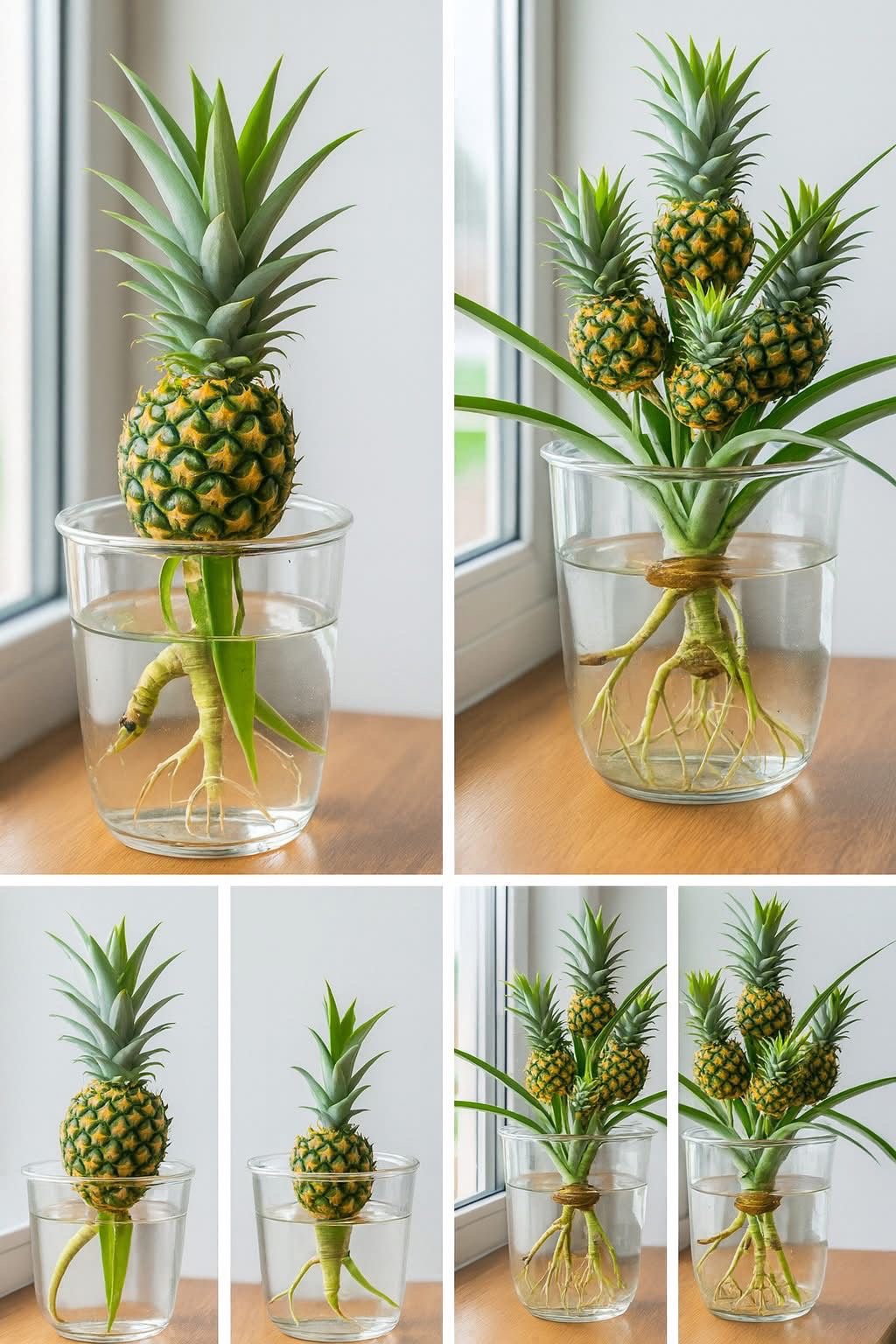
Pineapples are among the sweetest tropical fruits enjoyed around the world, often associated with sunshine, vacations, and refreshing juices. Many people don’t realize that you don’t need a large farm or a greenhouse to grow your own pineapple—just a little patience, creativity, and the crown of a pineapple you’ve already eaten. Yes, it’s possible to grow a thriving pineapple garden from scraps without spending a penny!
This method is not only fun but also sustainable, allowing you to recycle food waste into something fruitful—literally. Let’s explore how to turn that discarded pineapple top into a beautiful plant that may eventually yield large, sweet pineapples in your own home or garden.
A Little History of the Pineapple
The pineapple (Ananas comosus) originated in South America, primarily in the area now known as Brazil and Paraguay. It was spread through trade and exploration, eventually becoming a global fruit. For centuries, pineapples symbolized wealth, hospitality, and exotic luxury, as they were rare and difficult to cultivate outside tropical regions. Today, with simple techniques, anyone—even in cooler climates—can grow this tropical delight right at home.
Benefits of Growing Pineapples at Home
- Cost-Effective – You can grow a plant from a fruit you already bought.
- Sustainable Gardening – Reduces food waste by reusing scraps.
- Ornamental Beauty – Pineapple plants are striking, with long, sword-like leaves.
- Educational – A perfect project for kids and beginner gardeners.
- Healthy Harvest – Homegrown pineapples are chemical-free, sweet, and packed with vitamins.
What You Need
- 1 ripe pineapple (to eat and save the crown).
- A sharp knife.
- A glass or jar of water.
- A small pot with well-draining soil (cactus or succulent mix works well).
- A sunny spot (windowsill, balcony, or outdoor garden).
Step-by-Step Method
1. Prepare the Crown
- Cut the crown (leafy top) about 1 inch below the leaves.
- Peel off a few layers of the bottom leaves until you see small brown bumps (these are root buds).
- Allow the crown to dry for 1–2 days. This helps prevent rotting when planted.
2. Root in Water
- Place the crown in a glass of water, just enough to cover the base but not the leaves.
- Put it in a bright spot (indirect sunlight is best).
- Change the water every 2–3 days to keep it fresh.
- Within 2–3 weeks, small roots will appear.
3. Transfer to Soil
- Once roots are at least 2 inches long, plant the crown in a pot with well-draining soil.
- Water lightly but regularly, ensuring soil stays moist but never soggy.
- Place the pot in a sunny location. Pineapples love warmth and sunlight.
4. Care & Growth
- Watering: Pineapples are drought-tolerant, so water sparingly. Overwatering leads to root rot.
- Fertilizer: Feed with a balanced liquid fertilizer every 1–2 months.
- Light: Pineapples thrive in full sun—6–8 hours daily.
- Transplanting: If the plant outgrows the pot, move it to a larger one or into the garden.
5. The Waiting Game
- Pineapples grow slowly, and patience is key. It may take 18–24 months for your plant to flower.
- A red flower spike will appear first, which later develops into the golden pineapple fruit.
- The fruit takes about 6 months to mature after flowering.
Tips for Bigger, Sweeter Fruits
- Place the plant in the sunniest, warmest spot you can find.
- Use organic compost to boost growth naturally.
- Stress the plant slightly (for example, reduce watering or place an apple near the plant) to encourage flowering. Apples release ethylene gas, which triggers fruit development.
- Grow multiple pineapple plants so you can enjoy a steady supply over the years.
Nutritional Value of Pineapples
Homegrown pineapples are not only delicious but also a superfood.
- Rich in Vitamin C (immune booster).
- Contains Bromelain, an enzyme aiding digestion and reducing inflammation.
- High in manganese for bone strength.
- Packed with fiber and antioxidants.
Conclusion
Growing a pineapple garden from scraps is a rewarding journey that blends sustainability, patience, and joy. With nothing more than a leftover pineapple crown, sunlight, and time, you can enjoy big, sweet pineapples without spending a penny. Beyond the fruit, the process itself is fulfilling, teaching us to value nature’s cycles and the gift of growing food at home.
